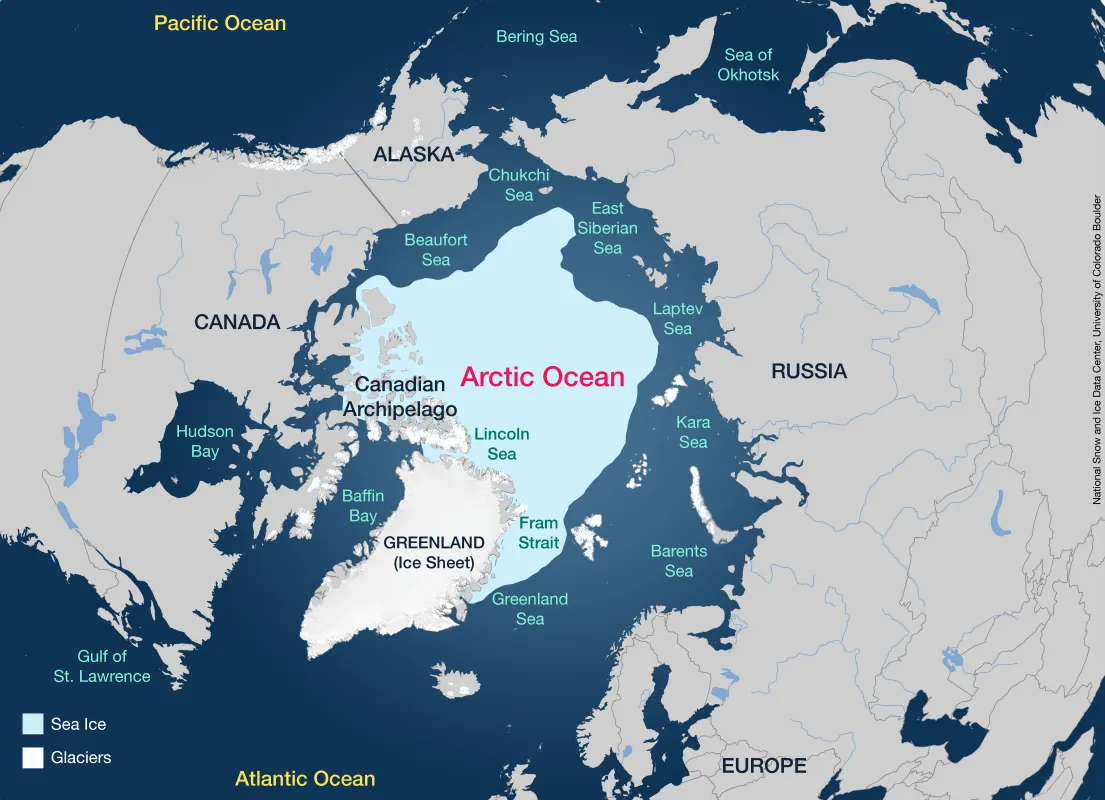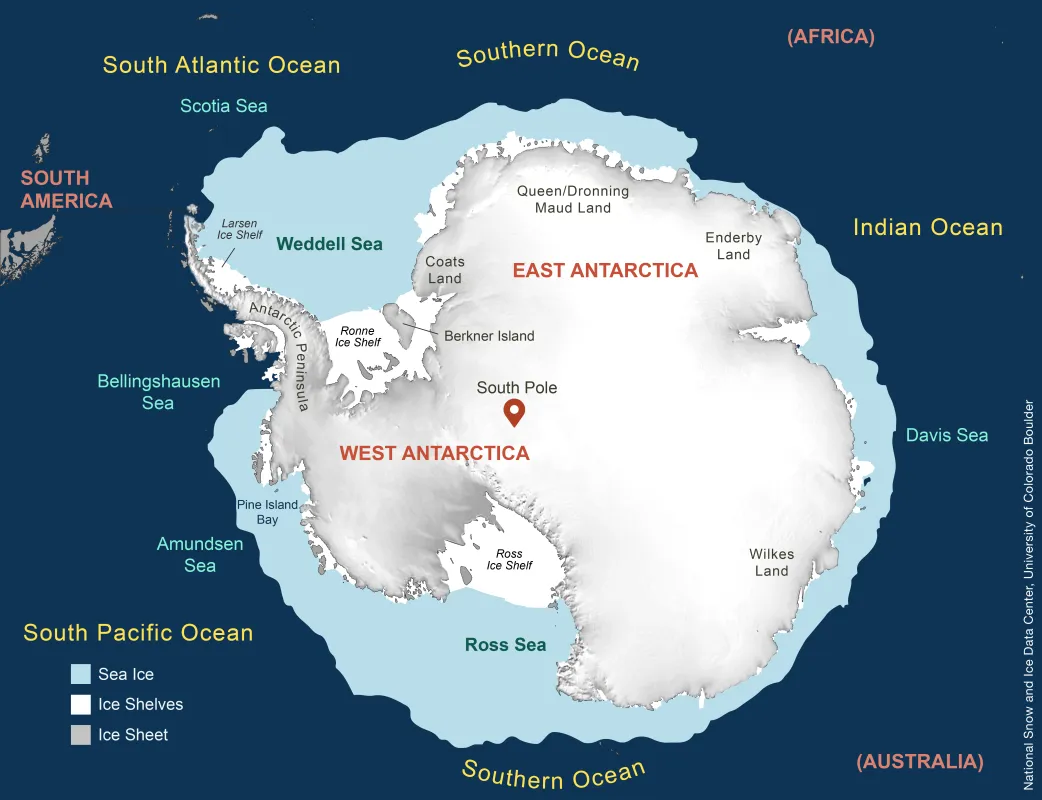
Sea Ice Today
Maps
Sea ice differs between the Arctic and Antarctic, primarily because of their different geographies. The Arctic is a semi-enclosed ocean, almost completely surrounded by land. As a result, the sea ice that forms in the Arctic is not as mobile as sea ice in the Antarctic. Although sea ice moves around the Arctic basin, it tends to stay in the cold Arctic waters. Pieces of sea ice, known as floes, are more prone to converge, or bump into each other, and pile up into thick ridges. These converging floes make Arctic sea ice thicker. Since sea ice tends to stay within the Arctic, it can survive longer and continue to thicken in its cold conditions. The presence of ridge ice and its longer life cycle leads to sea ice that stays frozen longer during the summer melt. So, a significant proportion of Arctic sea ice remains through the summer and continues to grow the following autumn. Of the 15 million square kilometers (5.8 million square miles) of sea ice that exist during winter, on average, about a third remains at the end of the summer melt season.
The Antarctic is almost a geographic opposite of the Arctic because in Antarctica, an ocean surrounds a land mass. The open ocean around the continent allows the forming sea ice to move more freely, resulting in higher drift speeds. However, Antarctic sea ice forms ridges much less often than sea ice in the Arctic because the open ocean boundary is less constraining. Also, because there is no land boundary to the north, the sea ice is free to float northward into warmer waters where it eventually melts. As a result, almost all the sea ice that forms during the Antarctic winter melts during the summer. During the winter, on average about 18.5 million square kilometers (7.1 million square miles) of ocean is covered by sea ice, but by the end of summer, only about 2.5 million square kilometers (965,000 square miles) of sea ice remain.
Arctic Ocean Map
Antarctica Map

